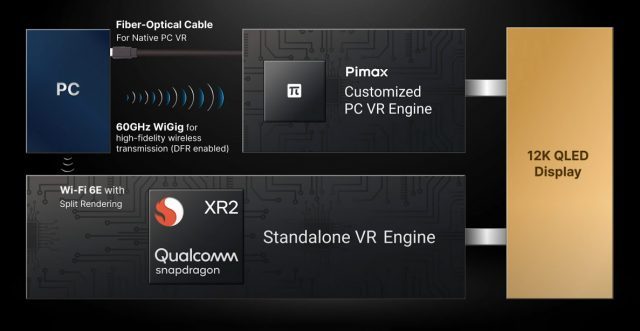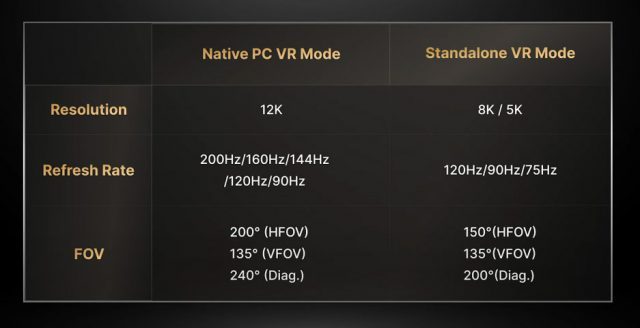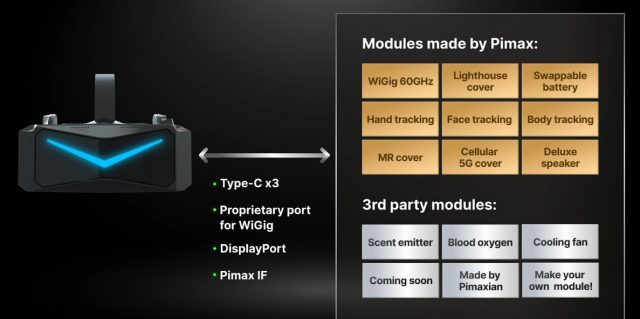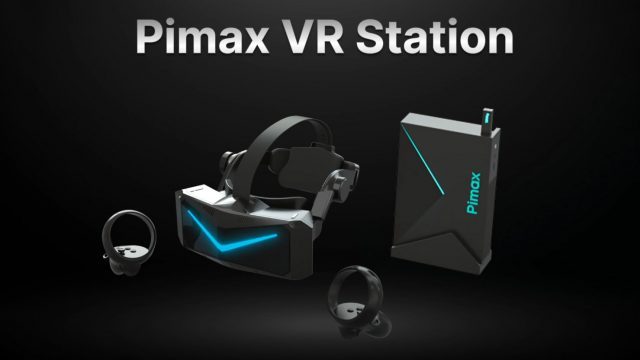The Entire VR Industry in One Little Email
The Daily Roundup is our comprehensive coverage of the VR industry wrapped up into one daily email, delivered directly to your inbox.
In a livestreamed presentation this week, VR headset maker Pimax announced its Reality “12K” QLED headset which aims to pack in a kitchen sink’s worth of wishlist features, not least of which is a dual-mode capability which allows the headset to function as a standalone headset or a native PC VR headset. With the slew of capabilities and specs the company hopes to deliver with the headset, it comes as no surprise that it’s also their most expensive device yet; the Pimax Reality “12K” QLED starts at $2,400 and is expected to ship at the end of 2022.
During a prerecorded presentation Pimax introduced its vision of a next-generation VR headset, the Reality “12K” QLED, which the company says will come packed with features that would make any headset envious. Here’s a rundown of what we do and don’t know about the specs so far:
Pimax Reality “12K” Specs |
|
| Display | Unspecified “12K” resolution Mini-QLED [estimated 5,760 x 3,240 (18.6MP) per-eye] |
| Refresh Rate | 75Hz, 90Hz, 120Hz, 144Hz, 160Hz, 200Hz |
| Lenses | Compound (aspheric & Fresnel characteristics) |
| Field-of-view (claimed) | 240° diagonal, 200° horizontal, 135° vertical, (118° stereo overlap) |
| Processor | Snapdragon XR2 |
| RAM | Unknown |
| Storage | Unknown |
| Wireless | Wi-Fi 6E, optional 60GHz add-on |
| Connectors | Unknown |
| Battery Life | Unknown (6,000mAh) |
| Optical Adjustments | IPD (automatic motor driven) |
| IPD Adjustment Range | 57–72mm |
| Connectors | DisplayPort |
| Cable Length | Unknown |
| Tracking | Inside-out (no external beacons), optional SteamVR Tracking add-on |
| On-board cameras | 4x head/hand/controller-tracking, 2x eye-tracking, 2x face-tracking, 3x mouth/body-tracking |
| Input | Unknown |
| Audio | In-headstrap speakers, optional off-ear speakers |
| Microphone | Yex (3x) |
| Pass-through view | Unknown |
| Weight | Unknown |
Pimax is positioning the Reality “12K” QLED as a VR headset which makes no compromises. Notably, that means the headset is capable of native, tethered PC VR, wireless PC VR, and pure standalone VR thanks to an integrated Snapdragon XR2 chip.
Ostensibly the standalone nature of the headset means that the Reality “12K” QLED will be running its own Android-based OS and Pimax will be operating its own store to sell native standalone content.
The standalone mode understandably won’t be able to take full advantage of the headset’s displays and lenses; Pimax says that mode will be limited to “8K” resolution, 120Hz, and a 150° horizontal field-of-view (instead of 200° in native PC VR mode). Even still, that would be very impressive for any standalone VR headset; there’s no telling how long the headset will be able to run on its 6,000mAh battery, though at least the company says it will be easy to battery swap.
Beyond that, the company says the headset will include tracking for head, controllers, hands, eyes, mouth, and even the full body, facilitated by a whopping 11 on-board cameras.
Pimax is also promising to deliver a slew of swappable face-plate modules to expand the headset’s capabilities with things like 60GHz WiGig for wireless streaming, SteamVR Tracking, mixed reality, 5G, and more. The company also says third-parties will be welcome to build their own modules to enable the headset to do even more.
But wait, there’s more! The company also announced the Pimax VR Station, which it described as a “console dedicated to play VR.” Though the company didn’t go into much detail, it sounds like the device will be a small form-factor PC which can run PC VR content. The Pimax VR Station is said to include the WiGig module for wireless play.
Pimax says the price of the Reality “12K” QLED “starts” at $2,400, though it isn’t clear which version of the headset and its many accessories and modules this will include. The release date for the headset is planned for Q4 2022.
Pimax found its footing in the VR industry after successful 2017 Kickstarter which promised to deliver an ultra-wide field-of-view VR headset with best-in-class resolution, along with its own controllers, and a slew of modules and accessories. While the company eventually delivered most of what it had promised, it came with growing pains in the form of significant delays, quality concerns, and a dizzying array of product offerings which at one point totaled six different headsets. Even three years after the expected shipping date, the company has also yet to deliver some key items from its Kickstarter, like its own custom controllers.
Pimax has never been short on ambition, but its execution hasn’t always kept up. After getting through rough waters leading out of its Kickstarter, and raising another $20 million in venture capital last year, the company does seem to have found a better footing, having consolidated its headset offerings and improved in hardware and software quality.
Still, the Pimax Reality “12K” QLED is certainly the most ambitious VR headset currently on the horizon, not to mention all of the accessories and additional promises like the Pimax VR Station, its own standalone VR OS, and its own content store. The new offering certainly has a similar vibe to the company’s Kickstarter in terms of the breadth of what’s being promised. This new headset, and all that’s planned to come with it, is a chance for the company to show it has left its growing pains behind.
Note: We put the “12K” part of the headset’s name in quotes because Pimax isn’t referring to the same 12K that is often used to describe TVs and monitors. The headset’s total horizontal resolution is near 12K, but this is split across each eye. Additionally, the resolution height is just half the height of what one would expect from a 12K TV. When referring to the headset’s name, we put “12K” in quotes to help our readers understand that it’s being used differently than they might expect.
Source: Read Full Article



